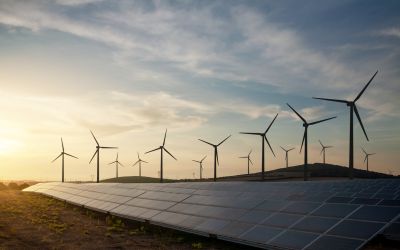ExxonMobil aims for net zero emissions by 2050
ExxonMobil’s ambition for net zero is backed by a comprehensive approach to develop Scope 1 and Scope 2 emission-reduction roadmaps for major facilities and assets.

ExxonMobil’s ambition for net zero is backed by a comprehensive approach to develop Scope 1 and Scope 2 emission-reduction roadmaps for major facilities and assets.
The net-zero ambition, contained in the company’s Advancing Climate Solutions - 2022 Progress Report, builds on ExxonMobil’s 2030 emission-reduction plans which includes net-zero plans for Permian Basin operations.
Darren Woods, Chairman and Chief Executive Officer, ExxonMobil, said: “ExxonMobil is committed to playing a leading role in the energy transition, and Advancing Climate Solutions articulates our deliberate approach to helping society reach a lower-emissions future.”
“We are developing comprehensive roadmaps to reduce greenhouse gas emissions from our operated assets around the world, and where we are not the operator, we are working with our partners to achieve similar emission-reduction results.”
The resiliency of the company strategy has been tested against a range of Paris-aligned net zero scenarios, including the United Nations Intergovernmental Panel on Climate Change’s 2018 Special Report and the International Energy Agency’s Net Zero by 2050 scenario.
ExxonMobil’s Outlook for Energy continues to be the basis for the company’s business plans and investment decisions.
The organisation continues to support an explicit price on carbon to establish market incentives and encourage investments in lower-emissions technologies.
ExxonMobil is also committed to helping customers reduce their greenhouse emissions by investing in carbon capture and storage, hydrogen and biofuels.
Darren Woods, Chairman and Chief Executive Officer, ExxonMobil, said: “As we invest in these important technologies, we will advocate for well-designed, high-impact policies that can accelerate the deployment of market-based, cost-effective solutions.”
“We believe our strategy is unique among industry and enables us to succeed across multiple scenarios. We will create shareholder value by adjusting investments between our existing low-cost portfolio and new lower-emission business opportunities to match the pace of the energy transition.”
To help reach net zero for operated assets by 2050, the company has identified more than 150 potential steps and modifications that can be applied to assets in its upstream, downstream and chemical operations.
Initial actions already underway prioritize energy efficiency measures, methane mitigation, equipment upgrades and the elimination of venting and routine flaring.
Further high-impact reduction opportunities include power and steam co-generation and electrification of operations, using renewable or lower-emission power.
The company expects to finalize detailed roadmaps that address approximately 90% of operations-related greenhouse gas emissions by the end of this year, and the remainder will be completed in 2023.
Initial steps to achieve net zero by 2050 are included in the company’s plans to invest more than $15 billion by 2027 on lower-emission initiatives.






